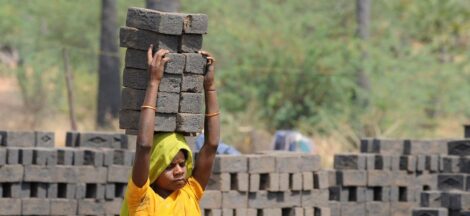By Subrata Majumder
Prime Minister Narendra Modi’s Independence Day speech surreptitiously missed the Make in India story, while he was exuberant about all other major schemes. Make in India was supposed to be his flagship scheme, as it was projected as the main driver of job creation in the country.
Observers are at a loss over the real reason for omitting the Make in India report card, when the Lok Sabha elections are nearing. According to a recent opinion poll survey, job creation topped the list for Modi’s failures. Analysts wonder why Modi is silent on Make in India while the Economic Survey and other government documents claimed success on that front.
A parallel trend coexists between GDP growth and employment generation. High GDP growth means more job opportunities. In contrast, India witnessed a contraction in labour market despite GDP achieving high growth during the four years of Modi rule. While GDP registered growth of an average 7 per cent per year during 2014-15 to 2017-18, the manufacturing industry did not show a corresponding growth, which should have led to job creation, analysts argued. From July 2014 to December 2016, only 6.4 lakh jobs were created, as against 12.8 lakh jobs created from 2011 to 2013 during UPA period.
The employment structure and manufacturing systems in the country suffer from a fallacy. In India, the informal sector is the big labour absorbent. According to NITI Aayog, 83 percent of workers in India are self-employed, casual or contact workers. They are all in the informal sector. With the advancement of technology and modern industries, entrepreneurs in organized sectors have chosen to stay away from labour-intensive industries and opted for highly capital or skilled-labour intensive industries. A number of labour intensive industries shifted to technology oriented and more mechanized factories, resulting in shrinkage of employment.
Till four years ago, there were only a few mobile phone manufacturers in the country. Today, 100 million mobile phones are manufactured, meeting more than half of the domestic demand.
Various reasons have been cited for the failure of Make in India, one of the most important being a lag in domestic investment. The major factor inhibiting domestic investment was the uncertainty over Modi’s business friendly outlook after demonetization and GST. The sudden announcement of demonetization and the GST, warranting several procedural compliances, created major hassles for investment in the informal sectors. Besides, putting reforms like land acquisition and labour laws on the backburner created a backlash against domestic investments.
Even though foreign investment surged, it failed to impact job creation. Three years were too short a period for investment to reflect in terms of job creation. More than 85 percent of foreign direct investment was in the green field areas. Generally, a green field project in manufacturing requires 2-3 three years gestation period to start the operation. Given these, yields of job creation from FDI projects will be visible only after 2018.
It was too early to gauge the impact of start-ups on job creation. The start-up policy, embedding various incentives, was launched in November 2016. Bulk of the start-ups are in the service sector, such as in E-commerce. Few are in manufacturing sector, resulting in low levels of job creation.
Slump in exports is another area which led to failures on the job creation front. Export-linked job is a major chunk of job opportunities in the informal sectors. About 30 percent of India’s exports are from labour-intensive industries. Export growth dipped into volatility due to the global slump, and caused depressed mood in the industry for job creation. According to an empirical study by the Export Import Bank of India, India’s export-linked jobs increased by over 9 percent from 1999-2000 to 14.5 percent in 2012-13. With exports slipping into downtrend consecutively for two years during the Modi regime, export-supported jobs witnessed bad days.
There has been transformational change in the manufacturing practices, which showed sectoral growth and labour intensive industries were not the panacea for Make in India success. Sectoral growth, such as textile, leather, agro based industries, cannot act as springboards to let India become the global manufacturing hub, lest it becomes party to GVC (Global Value Chain) value added manufacturing network.
Given the low cost production as the base for the benefits under GVC manufacturing network across the borders, firms in developed countries have established transnational manufacturing network, combining their high tech know how with lower wage labour in developing countries. Eventually, production has become increasingly fragmented across the borders through the growing prevalence of GVC for production of components and parts in low wage countries. South East and East Asia became the major stakeholders in this new pattern of production.
India trailed behind in this race, the main reasons being inadequate supply of skilled labour, lacklustre export infrastructure, limitation of scale and difficulty in accessing cheap credit. These economic ills shadowed India’s potential as manufacturing exporter and became detrimental for it to enter the GVC network for manufacturing.
Nonetheless, rise in wages in China, Thailand, Malaysia and Indonesia – the main partners for GVC — unleashes opportunities for India to be party to GVC value added mode, owing to its low cost manufacturing facilities. However, only low wages are not enough. Technology upgradation, skilled manpower and better export infrastructure are essential for India to become party to GVC manufacturing network across borders and make the Make in India a big success. (IPA Service)
The post Why ‘Make In India’ Suddenly Sounds Jarring To Modi Ears appeared first on Newspack by India Press Agency.


